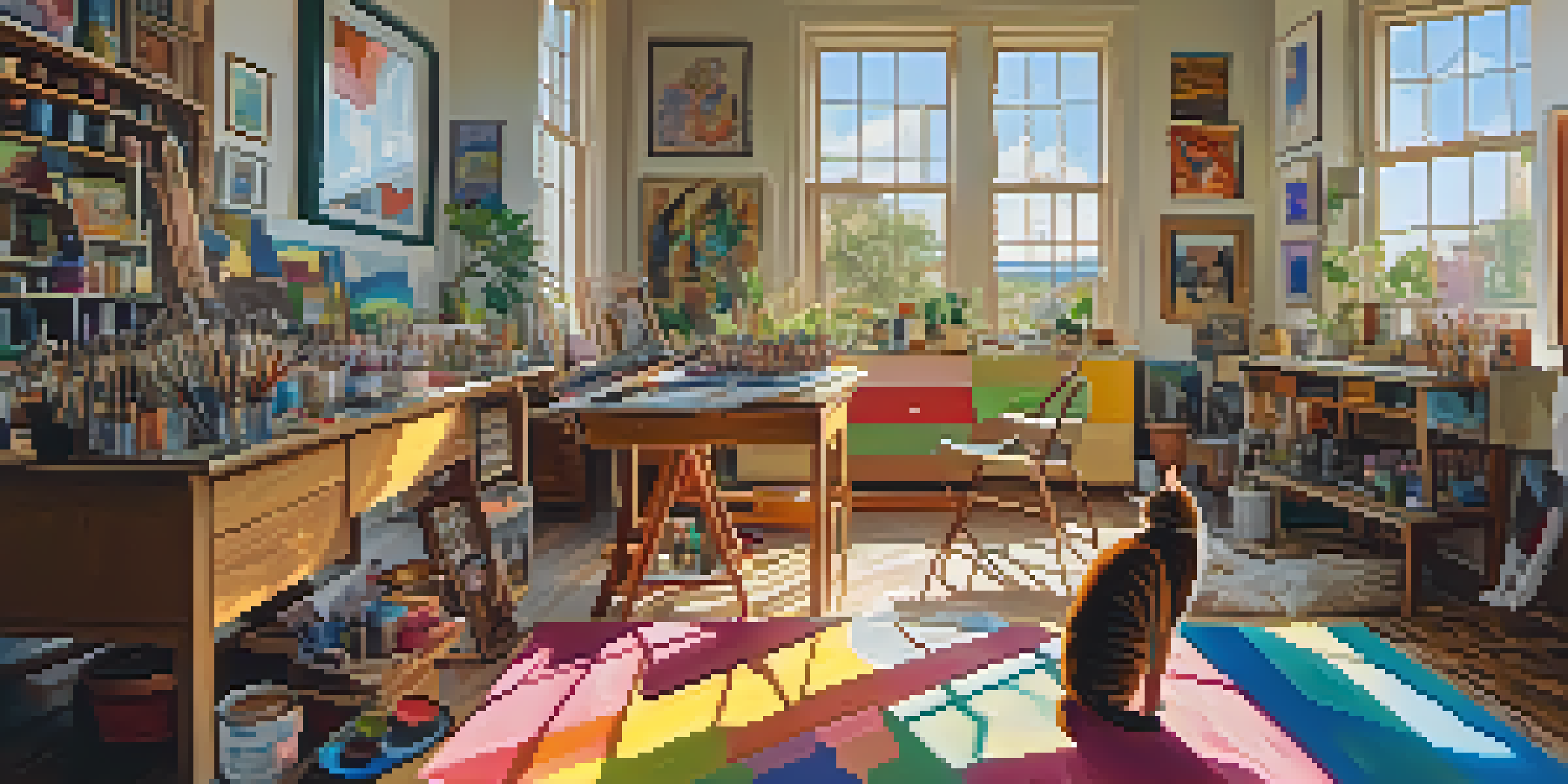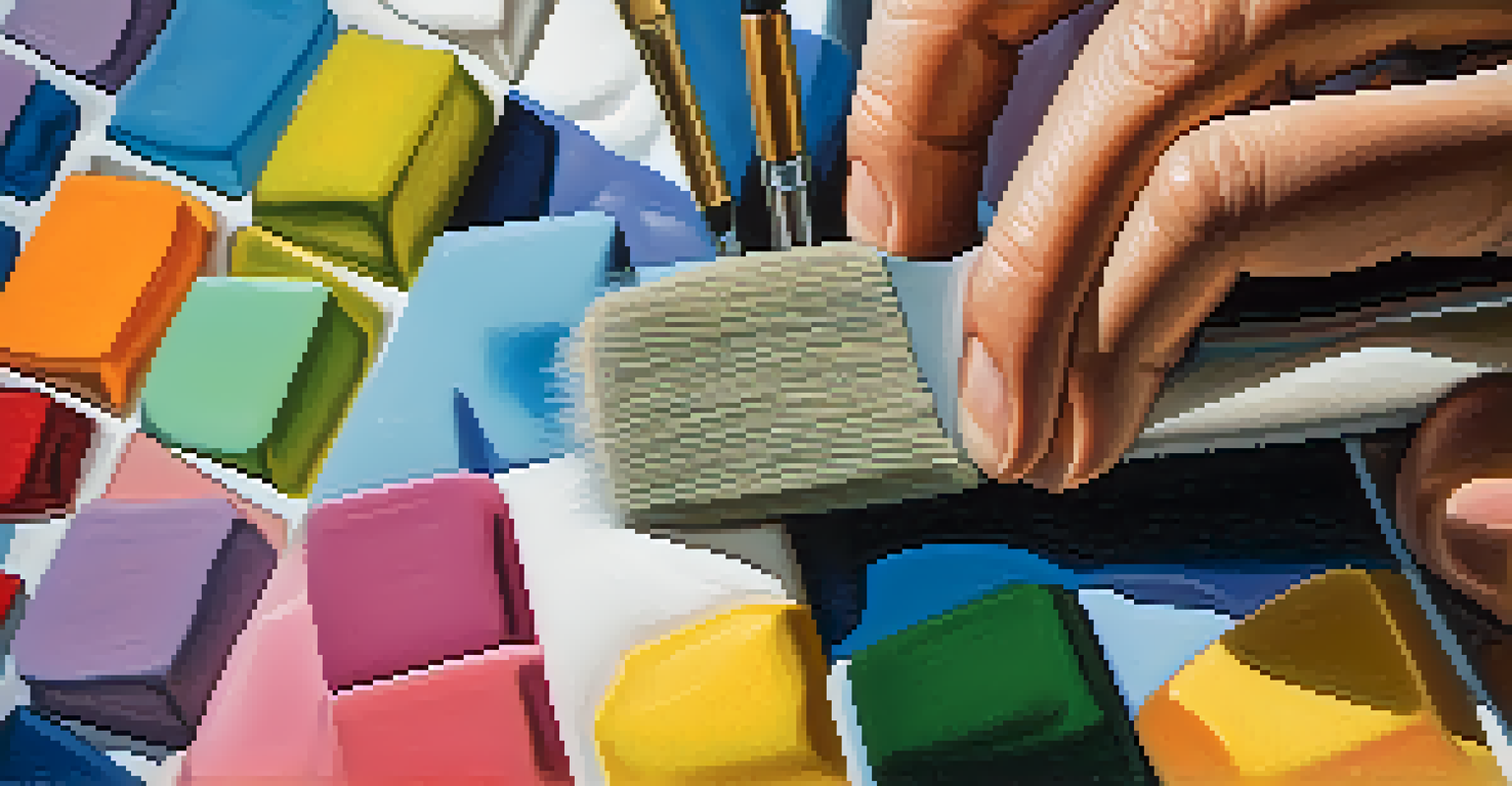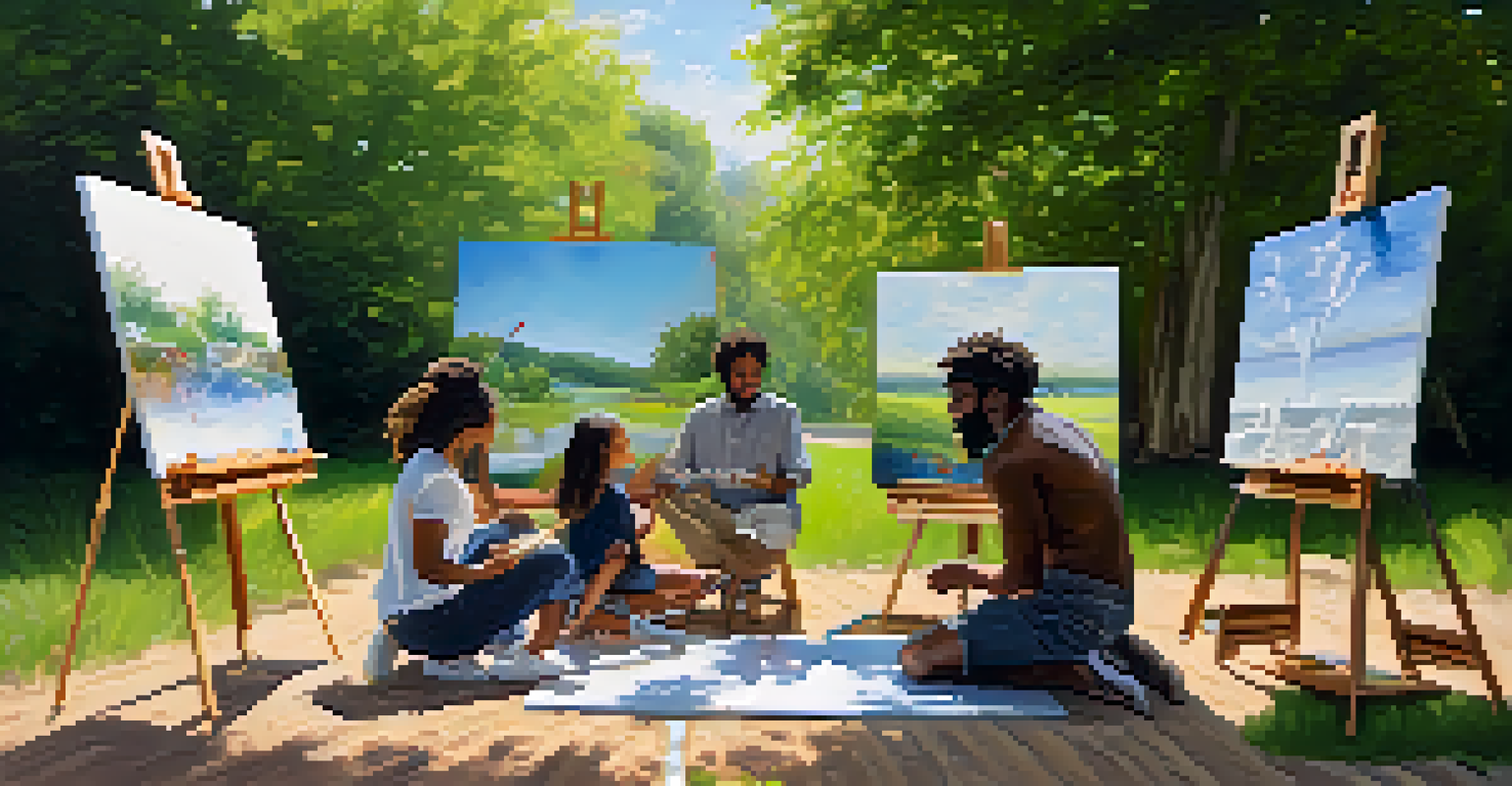The Role of Play in Developing Unique Artistic Styles

Understanding the Concept of Play in Art
Play is often seen as a frivolous activity, but in the context of art, it serves as a powerful tool for exploration and discovery. It encourages artists to experiment freely without the fear of judgment or failure. This sense of freedom allows for a more organic development of personal style, as artists can play with shapes, colors, and forms.
Every artist was first an amateur.
For instance, when children engage in play, they often create fantastical worlds without limitations. Similarly, adult artists can tap into this childlike wonder by allowing their imagination to flourish during the creative process. This mindset not only fosters creativity but also enables artists to break away from conventional techniques and norms.
Ultimately, play in art is about embracing curiosity and spontaneity. It encourages the exploration of new ideas and methods, paving the way for unique artistic expressions that reflect the artist's individuality.
Play as a Catalyst for Creativity
Creativity thrives in an environment where play is encouraged. When artists engage in playful activities, they often stumble upon unexpected ideas and solutions. This serendipitous discovery can lead to innovative artistic styles that might not have emerged through structured methods.

Consider the example of famous artists like Pablo Picasso, who often experimented with different techniques and materials without a predetermined outcome. His playful approach allowed him to develop a unique style that combined elements of abstraction and realism. This ability to adapt and explore is a hallmark of creative genius.
Play Fuels Artistic Exploration
Engaging in playful activities allows artists to experiment freely, leading to unique artistic expressions and styles.
Allowing oneself to play can lead to breakthroughs in creativity that foster the development of a distinct artistic voice. The more an artist plays with ideas, the more they uncover their unique perspective, ultimately shaping their style.
The Impact of Experimentation on Artistic Identity
Experimentation is a key component of play that helps artists discover their unique identity. By trying out various techniques and mediums, artists can find what resonates with them personally. This journey of experimentation often leads to the emergence of a signature style that sets them apart.
Creativity takes courage.
Take the example of a painter who initially works with watercolors but decides to experiment with acrylics. This shift in medium might lead to new techniques and effects that inspire a completely new approach to their work. Through this exploration, they begin to define their artistic identity.
This process of trial and error is essential in helping artists understand their preferences and strengths. In essence, play and experimentation work hand in hand to cultivate a rich artistic identity that reflects the artist's unique vision.
Collaborative Play and Its Influence on Style
Collaboration is another form of play that can significantly influence an artist's style. When artists work together, they exchange ideas and techniques that can spark new creative directions. This shared experience often leads to the blending of different styles, resulting in unique hybrids that reflect the contributions of each artist.
For example, collaborative projects between street artists and traditional painters often yield innovative works that challenge conventional boundaries. The playful interaction between diverse artistic backgrounds can inspire new perspectives and techniques, enriching both artists' styles.
Experimentation Shapes Identity
By trying various techniques and mediums, artists can discover their preferences and develop a distinctive artistic identity.
Moreover, collaborative play fosters a sense of community and support among artists, which can be incredibly motivating. This camaraderie encourages further experimentation and exploration, ultimately leading to the evolution of unique artistic styles.
Playfulness in Artistic Techniques and Mediums
The choice of techniques and mediums is an important aspect of developing a unique artistic style, and playfulness plays a significant role here. Artists who are willing to experiment with unconventional materials often discover unexpected textures and effects that can define their work. This playful exploration can lead to groundbreaking techniques that set an artist apart.
For instance, using everyday objects as tools, like a sponge or a piece of fabric, can result in surprising artistic outcomes. This kind of experimentation encourages artists to think outside the box and challenge traditional methods, leading to the development of a distinctive style.
Ultimately, the willingness to play with techniques and mediums fosters a sense of innovation that fuels artistic growth. Embracing this playfulness can lead to a rich tapestry of styles that reflect the artist's journey and personality.
Emotional Play and Its Role in Artistic Expression
Emotional play is another vital aspect of artistic development, allowing artists to explore their feelings through their work. This playful engagement with emotions can lead to profound artistic expressions that resonate with audiences. By tapping into their emotional landscape, artists can create pieces that are not only visually striking but also deeply relatable.
For example, an artist may use bright colors and whimsical shapes to convey joy, while darker hues and chaotic forms might express turmoil. This emotional play enables artists to communicate complex feelings and experiences in a way that transcends words.
Collaboration Enhances Creativity
Collaborative play among artists fosters the exchange of ideas, resulting in innovative styles that blend different artistic backgrounds.
By embracing emotional play, artists can cultivate a unique voice that reflects their inner experiences. This authenticity often resonates with viewers, creating a powerful connection that enhances the overall impact of their work.
The Lifelong Journey of Play in Art
The role of play in developing unique artistic styles is not confined to a specific phase of life; it's a lifelong journey. Artists can continue to incorporate play throughout their careers, allowing their styles to evolve and grow. This continuous engagement with play fosters a dynamic relationship with their art, keeping their creativity fresh and exciting.
Many seasoned artists find that returning to playful techniques they used in their early days can reignite their passion and inspire new directions in their work. This cyclical nature of play allows for constant reinvention and exploration, ensuring that their artistic journey remains vibrant.

Ultimately, embracing play as an integral part of the artistic process can lead to a fulfilling and ever-evolving creative life. By prioritizing play, artists can cultivate unique styles that reflect their growth and experiences over time.